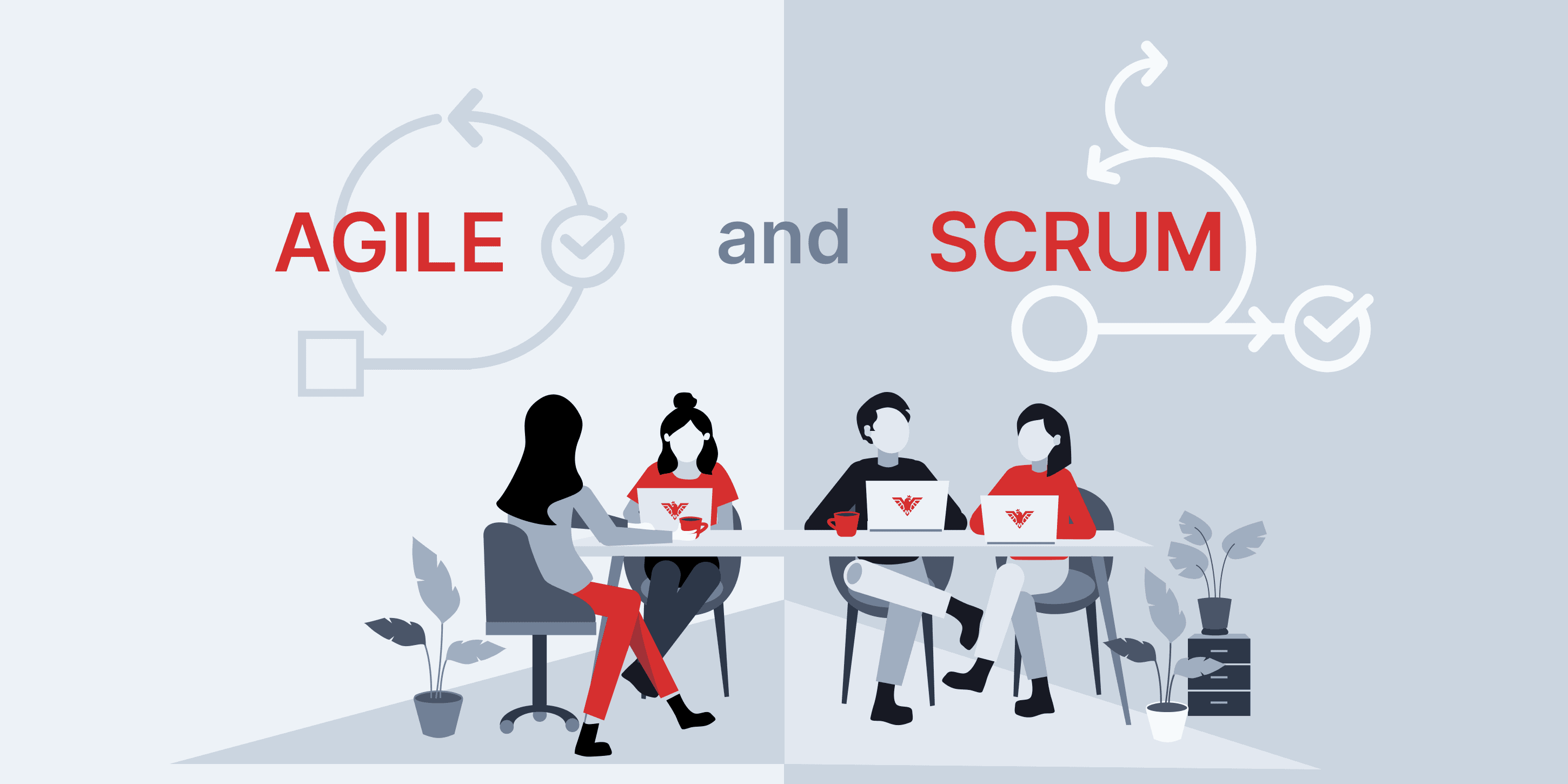Scrum and Agile methodologies
Agile methodologies are in vogue in the IT business world. They allow stakeholders to receive constant updates and provide feedback to project managers. That way, everyone can work on improving the project regularly instead of dragging an error all the way and starting over from scratch.

Jiří Kostov
Head of HR
03 Feb 2023
5 min read

Agile methodologies are in vogue in the IT business world. They allow stakeholders to receive constant updates and provide feedback to project managers. That way, everyone can work on improving the project regularly instead of dragging an error all the way and starting over from scratch.
That said, Agile is not a methodology, though it's easy to mistake it for one. On the other hand, Scrum indeed is an agile methodology. The concepts can be misleading, and thus this post aims to discuss the differences between them.
The difference between Agile and Scrum
Agile is not a methodology but a school of thought. Its values are collaborating as a team, dividing the work into iterations, delivering small amounts of value over time instead of everything at the end, and responding to change quickly. From these core principles come agile methodologies, such as Scrum.
Now, what is Scrum?
Scrum is an agile framework that focuses on delivering the highest business value in the shortest time. It allows project managers and stakeholders to rapidly and repeatedly inspect the work done to identify what is working and what is not. Scrum is often used in IT projects, as dragging errors in these projects can be a tremendous burden. Scrum divides the work into sprints, with a typical duration of two to four weeks, and at the end of each sprint, the team delivers a working product increment.
Agile development with Scrum
Scrum is an iterative and incremental framework for managing complex development projects. It provides a simple yet powerful set of rules for teams to follow. These rules allow workers to be more flexible and responsive to changing customer requirements, business priorities, and market conditions. The focus on team interaction over process means it can adapt to organizations with widely varying needs and structures.
Scrum meetings in agile methodologies
Agile methodologies are in favor of team collaboration, and so is Scrum as a result. An agile Scrum meeting refers to sessions where team members and project managers get together to discuss how the project is progressing and what needs to be done. These meetings can be daily standups, sprint planning sessions, and sprint retrospectives.
Daily standup: They are great for discussing the work for the day.
Sprint planning session: They help determine what the team will do during the next sprint session.
Sprint retrospective: They answer questions like "What did the team do during the past sprint session? What could've been done better?"
Kanban VS Agile VS Scrum VS Waterfall
The world of project management includes several different methodologies and concepts. This section aims to review and contrast each one:
Agile (methodology)
The Agile methodology emphasizes iterative development, collaboration, and flexibility. It aims to deliver high-quality software that meets the needs of the user and adapts to change. Agile approaches include Scrum, Lean, and Extreme Programming (XP).
Scrum (framework)
Scrum is a specific framework for implementing Agile. It involves a team working in short iterations called "sprints" to deliver small, incremental pieces of functionality. The team self-organizes to complete the work and is led by a Scrum Master, who helps the team follow the Scrum process.
Waterfall (linear approach)
The Waterfall method is a linear, sequential approach to project management and software development. It involves breaking down a project into distinct phases, with each phase building upon the previous one and culminating in delivering a completed product.
The Waterfall method follows a set of defined steps, in which each phase must be completed before the next phase can begin. The steps typically include requirements gathering and analysis, design, development, testing, and deployment. Unlike agile methodologies and frameworks, it's inflexible and doesn't allow for changes.
Kanban (lean methodology)
Kanban is a lean methodology.
The Japanese word means "visual board." On a Kanban board, the work is displayed and organized in columns, each representing a stage of the process.
The most basic Kanban board features:
- To-be-done
- In progress
- Completed!
Individual tasks - represented by cards on the board - advance through the different columns until they are completed.
Lean methodology VS Agile methodology
Both philosophies share the importance of delivering value to customers quickly. However, lean methodologies differ in that, without losing sight of customers and stakeholders, they place greater importance on quality and efficiency, eliminating "waste" and keeping only what adds value to the process. Long story short, they aim to do more with less.
Agile focuses on developing a product that solves customer needs. Lean focuses on improving the process to reduce delivery times and improve quality.Lean focuses on improving the process to reduce delivery times and improve quality.
Which methodology is most effective?
The truth is that each methodology, framework, and approach has its benefits and downsides. For example, finding a combination of the Kanban method with a Scrum overall framework can deliver the most effective results for your team. Or not - It is about finding what works best for each organization.
Final Words: Software development with Agile and Scrum
IT companies must work efficiently and fast to provide stakeholders and customers with top-quality and innovative products. That is why project managers need to find more effective project management strategies and methodologies to live up to expectations.
Agile methodologies aim to work collaboratively, divide the work into subsections, and provide constant feedback to employers and stakeholders. From these values and principles come Scrum and other processes. Scrum is one of the most used agile processes in IT companies, as it helps deliver better results in the shortest period.
Agile project management with Scrum
Scrum is a popular choice for managing complex development projects because it allows rapid, iterative development and delivery of high-quality products. It also emphasizes collaboration and continuous improvement, which helps teams stay agile and adapt to changing requirements. While it can take some time to get used to the Scrum process, many teams find that it helps them deliver better products faster and more efficiently.